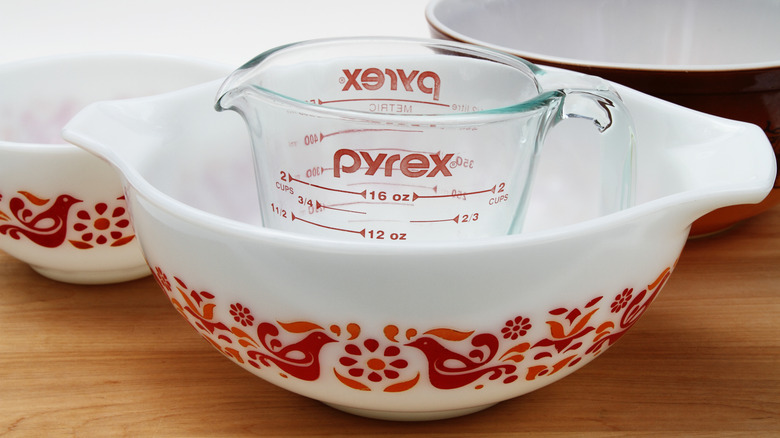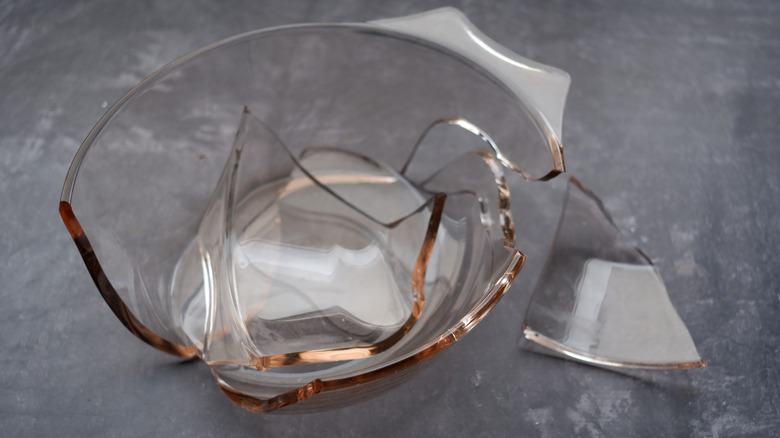Baking With Pyrex Is Safe If You Avoid One Mistake
Many a home baker has wondered whether they can put their Pyrex kitchenware into the oven without it shattering. The good news is that Pyrex is sometimes fit for baking — but there's a trick to keeping it in one piece.
You should avoid sudden temperature changes when baking with Pyrex, as this is what makes it shatter. The same often applies to other types of glass bakeware. This means if you're putting it in a hot oven, Pyrex should ideally be at or above room temperature beforehand — if the Pyrex is in your refrigerator, you'll want to take it out and leave it on the counter for maybe half an hour before it goes in the oven. Correspondingly, moving Pyrex directly from the freezer to the oven is an even worse idea. If you're putting something cold or freezing into room temperature Pyrex, it might make the dish colder, so you may want to let it sit before putting it in the oven in this situation, too.
One other problem is putting Pyrex in an oven that's heating up: The intense heat from the oven's element or flames can make it shatter, so only put it in the oven when it's fully preheated. When you take it out, be careful of sudden temperature changes in the other direction, too — if you pour cold water over an oven-hot Pyrex dish, it may also shatter.
Be aware of the type of Pyrex you're working with
Not all Pyrex is made alike — there are two main types of Pyrex out there on the market, and one is much more oven-safe than the other. The original oven-safe Pyrex was made with a type of glass called borosilicate, while in recent decades, a new type of tempered glass called soda-lime has been used. Borosilicate glass is the one that can handle temperature changes better, while soda-lime glass is more sensitive. It has its own advantages, though. For example, it shatters into less-dangerous cubes when broken.
There's one trick to telling which Pyrex is which: When a Pyrex logo is written in capital letters, it should be borosilicate, while all-lowercase letters indicate the soda-lime glass. Ideally, the glassware will have come with precise safety instructions (either in its packaging or printed on the glass itself). If these specify specific temperature limits, follow that.
Finally, bear in mind that even oven-safe Pyrex is only recommended for temperatures up to 425 degrees Fahrenheit (and some cooks suggest sticking to 400 degrees just to be safe). So, if you're baking something like bread with high temperatures, perhaps opt for a metal dish instead.

